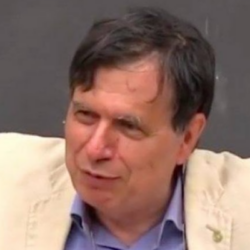
Giorgio Parisi

Giorgio Parisi (1948) is an Italian theoretical physicist. He was awarded the 2021 Nobel Prize in Physics for his groundbreaking contributions to the theory of complex systems, in particular “for the discovery of the interplay of disorder and fluctuations in physical systems from atomic to planetary scales.” Parisi received his degree from the University of Rome La Sapienza in 1970 under the supervision of Nicola Cabibbo, and from 1981 until 1992 he was a full professor of Theoretical Physics at the University of Rome Tor Vergata. He later held the same position at the Sapienza University of Rome until his retirement in 2018. He was also a researcher at the Laboratori Nazionali di Frascati (1971–1981) and a visiting scientist at the Columbia University (1973–1974), Institut des Hautes Études Scientifiques (1976–1977), and École Normale Supérieure (1977–1978). From 2018 until 2021 he was the President of the Accademia Nazionale dei Lincei. He is a foreign member of the French Academy of Sciences, the American Philosophical Society, and the United States National Academy of Sciences. Before being a Nobel Laureate, he was awarded the Feltrinelli Prize (1986), the Boltzmann Medal (1992), the Dirac Medal (1999), the Enrico Fermi Prize (2002), the Heineman Prize for Mathematical Physics (2005), the Nonino Prize “An Italian Master of our Time” (2005), the Microsoft Award (2007), the Lagrange Prize (2009), the Max Planck Medal (2011), the Nature Award for Mentoring in Science – Italy (2013), the High Energy and Particle Physics Prize (2015), the Lars Onsager Prize (2016), the Pomeranchuk Prize (2018), the Wolf Prize (2021), In 2021 he was inserted in Clarivate Citation Laureates. Giorgio Parisi’s research has focused mainly on quantum field theory, statistical mechanics and complex systems. His best-known contributions are the QCD evolution equations for parton densities, obtained with Guido Altarelli, known as the Altarelli–Parisi or DGLAP equations, the exact solution of the Sherrington–Kirkpatrick model of spin glasses, the Kardar–Parisi–Zhang equation describing dynamic scaling of growing interfaces, and the study of whirling flocks of birds.
